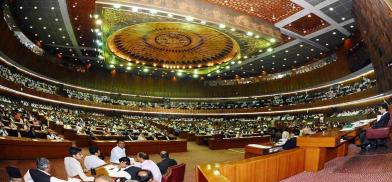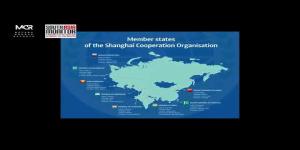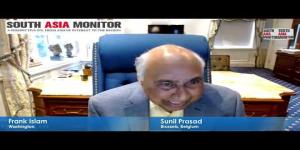Can Pakistan sustain its bold policy reforms?
Another critical reform is ensuring that at least 33% of government board members are women. This move is more than just a symbolic gesture; it marks a tangible shift toward inclusivity in decision-making. Women have historically been underrepresented in governance structures, and this policy sends a strong message that their voices are not just welcome but necessary for Pakistan’s progress.

Pakistan’s journey towards progress has always been a story of resilience, determination, and ambition. In a region fraught with economic and political challenges, the country has often been seen as struggling to keep up. However, the Pakistan Reforms Report 2025 presents a different picture - one of transformation, efficiency, and forward-looking policies that signal a commitment to real change. Compiled by Mishal Pakistan, a governance and economic research institution, the report highlights over 120 reforms implemented within just 11 months, painting a hopeful yet pragmatic outlook for the country’s future.
Governance overhaul
One of the boldest steps outlined in the report is the reduction of the federal workforce by 150,000 positions. On the surface, such a move might seem harsh, raising concerns about unemployment. However, this decision is aimed at streamlining government operations, cutting unnecessary expenditures, and fostering efficiency. For years, an overstaffed and sluggish bureaucracy has been a major hurdle in governance, draining national resources without adding proportional value. By trimming the fat, the government is taking a decisive step toward creating a more agile and responsive administration.
Another critical reform is ensuring that at least 33% of government board members are women. This move is more than just a symbolic gesture; it marks a tangible shift toward inclusivity in decision-making. Women have historically been underrepresented in governance structures, and this policy sends a strong message that their voices are not just welcome but necessary for Pakistan’s progress. If sustained, this could lead to broader changes in corporate and institutional leadership, fostering a more balanced and diverse governance ecosystem.
Economic revival
For a country that has battled economic instability for decades, the figures presented in the report are surprisingly reassuring. Inflation, which peaked at an alarming 38% in May 2023, has been brought down to just 4.1% by December 2024. Such a drastic decline is no coincidence- it reflects deliberate fiscal discipline, smart monetary policies, and a focused effort to restore economic confidence.
Similarly, Pakistan’s foreign exchange reserves have climbed from a precarious $4.4 billion to a robust $11.73 billion, providing much-needed financial security. This growth is crucial not only for investor confidence but also for shielding the economy from external shocks. A shrinking trade deficit, down from $27.47 billion to $17.54 billion, further supports the idea that Pakistan is moving toward a more sustainable economic model.
Beyond the numbers, these improvements translate into something more meaningful: relief for ordinary citizens. Lower inflation means reduced costs of essential goods, increased purchasing power, and an improved standard of living. A more stable economic environment fosters job creation, business growth, and long-term prosperity.
Investment and industry
For years, Pakistan’s investment climate has been plagued by red tape, regulatory confusion, and policy inconsistency. The report, however, suggests that the tide is turning. The signing of 34 Memorandums of Understanding (MoUs) with Saudi Arabia, totaling $2.8 billion, reflects growing international confidence in Pakistan’s economic potential. These agreements, spanning energy, infrastructure, and technology sectors, could provide a much-needed boost to industrial growth.
The expansion of Special Economic Zones (SEZs) and the creation of Business Facilitation Centers (BFCs) are other key steps in making Pakistan a more attractive destination for investors. By offering tax incentives and reducing bureaucratic hurdles, these initiatives can create a more business-friendly environment, encouraging both local and foreign entrepreneurs to set up industries and create jobs.
Security and immigration reforms
Security has long been a stumbling block for Pakistan’s progress, with both domestic and international investors citing instability as a primary concern. In response, the establishment of the National Forensics and Cybercrime Agency (NFCA) represents a crucial step forward. As the country moves toward a digital economy, cybersecurity will play a pivotal role in safeguarding financial transactions, personal data, and national security interests.
On the immigration front, the introduction of Visa Prior to Arrival (VPA) facilities for 120 countries marks a shift towards greater global integration. Over 120,000 visas have been approved within just six months, indicating a strong interest in Pakistan as a travel and business destination. Making the country more accessible to the world could have lasting economic and cultural benefits, fostering stronger ties with international partners.
Reforms in religious institutions, particularly the mandatory registration and financial audits of madrassas, are also noteworthy. By integrating modern subjects into religious education, Pakistan is taking a crucial step toward equipping students with diverse skills, enabling them to participate in the broader economy while maintaining their cultural and religious identities.
Embracing the digital age
A modern economy cannot function without a robust digital infrastructure, and the report highlights key steps taken to ensure Pakistan is not left behind. The introduction of a Digital Case Flow Management System in 178 federal courts, allowing 130,000 cases to be tracked via SMS, is a game-changer for judicial efficiency. Slow court proceedings have long been a burden on businesses and individuals alike, and this reform aims to ensure faster resolutions and greater transparency in the legal system.
Additionally, the AI-driven National Registration & Biometric Policy Framework signals the government’s commitment to leveraging technology for better governance. In an era where data security is paramount, initiatives like these not only streamline administrative processes but also protect citizens from fraud and identity theft. If expanded further, Pakistan has the potential to position itself as a leader in digital governance across the region.
A transforming Pakistan?
The Pakistan Reforms Report 2025 offers an optimistic yet pragmatic vision of the country’s future. While the achievements so far are commendable, the real test lies in sustaining this momentum. Policy reforms often face resistance, and their long-term success will depend on consistent execution, political stability, and public support.
However, one thing is clear: Pakistan is not standing still. The reforms outlined in this report show a nation willing to take bold steps, embrace change, and work towards a more prosperous and inclusive future. If these policies continue to evolve in the right direction, Pakistan could very well emerge as a model for developing economies striving for stability and growth.
The key now is persistence. These reforms should not be seen as an endpoint but as a foundation for further progress. With the right leadership, commitment, and vision, Pakistan’s transformation story could serve as an inspiration for the world, one where resilience and reform pave the way for a brighter future.
(The author is a visiting faculty at the Department of Politics and International Relations, International Islamic University, Islamabad (IIUI). She holds an MS in Strategic Studies from Air University Islamabad. Views expressed are personal. She can be reached at saranazeer2@gmail.com )









Post a Comment